How to train a Boxer puppy, this post may contain affiliate links. Learn more on my Affiliate Disclosure page.
How to train a Boxer puppy yourself can be big fun. And besides, you avoid paying expensive professional dog trainer fees. Continue reading if you need more time or budget to travel across town to a professional dog training service.
Self-training your dog will save you time and money since you won't need to take your dog to a professional trainer's facility. Another benefit of Do It Yourself (DIY) dog training, it will keep your dog from being confused due to receiving behavior commands from different people.
Using the How to Train a Boxer Puppy practices, you will learn about common problems most likely encountered by Boxer parents during specific dog training sessions, so we'll show you how to overcome them.
Being a Boxer dog parent is a great idea. Boxer puppies are fun, playful, and lovable. Due to their lively personalities and fun-loving behavior, they will keep you laughing.
Boxer puppies are devoted companions and serve as excellent watchdogs, warning you if anyone comes near your home.
In addition, how to train a Boxer puppy is essential because they love being petted by most people, even children, and they love running and playing with other dogs. But, you will quickly determine that early Boxer puppy training is necessary.
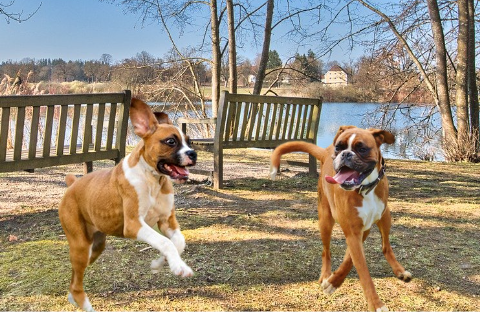
Puppy History Of Breed
Dog breeders created the Boxer's bridle coats to camouflage them against tall grasses and trees.
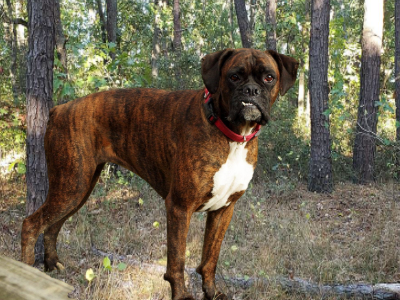
Knowing your dog's history is essential before beginning behavior training. For example, dog breeders bred Boxers to be fearless hunting dogs.
Your training sessions will go much easier when you understand your dog's instincts and behavior patterns.
Breeders mixed an English Bulldog and an extinct breed called the Bullenbeisser to create the Boxer breed in the 1800s.
Bred to be a hunting breed, the Bullenbeisser belonged to the Mastiff family. Deer and wild boar were chased and held by these massive dogs until their owners arrived to retrieve them.
Boxer Dog Distinguish Characteristics

Boxer Dog Characteristics And Temperament
Generally, Boxer dogs are friendly and playful. They are very affectionate and enjoy being around people. They are trainable due to their people-oriented personalities.
The American Kennel Club ranks the Boxer at number 14 on its popularity list so you can find out more about the breed there.
Pros and Cons For A Boxer Puppy
~~~~~~~~~~~~~~~
Pros
- Multipurpose - Boxers are considered obedient dogs that are easy to socialize with and have been used as police dogs, war dogs, and home guards. Besides being an excellent pet, this dog also accepts friendly strangers and is a devoted family pet.
- Easy-care Dog - Boxers have a short coat and require occasional grooming and wipe-downs.
- Intelligent Dog - Smart and fast learners, this dog is inherently intelligent. In addition to agility and flyball, the Boxer can participate in any organized dog sport. To adapt well to your home environment, boxer dogs need consistent training and socialization.
- Funny - It is impossible not to laugh all the time when you are a Boxer dog parent.
- Active Dog - Boxers are active dogs that require a lot of mental and physical stimulation. Hiking, jogging, or running with this dog is an ideal outdoor activity. A Boxer's athletic abilities allow them to participate in various dog sports.
- Good Pet Companion - Nothing is more beautiful than this breed of dog. It is friendly, lovable, and happy and never leaves your side when you are around. He is also highly comical and playful, making him a great pet companion.
- Excellent Watchdog -If your Boxer dog senses a stranger or a potential threat in your home, he will bark.
- Good Indoor Dog - This breed enjoys being indoors, as it can't tolerate severe weather conditions. If you plan to go out with your Boxer dog, ensure the weather is comfortable. A Boxer is a good choice if you want a dog that is good at staying indoors.
- Temperament - Boxers won't threaten young children due to their friendly character and personality if well socialized.
~~~~~~~~~~~~~~~
Cons
- Obedience Training - How to train a Boxer puppy is crucial if you want your Boxer to listen to and obey your commands.
- Shedding - As a short-haired breed, Boxers shed a lot.
- Excitable - The excitable nature of Boxers causes them to jump up on people, pull on their leash, and bark and leap excessively when they first meet their dog parents.
- Health Issues - Allergies, Ear "infections," Gas, Chewing or licking of the paws, Itching, Tear stains, Boxer acne, Yeast "infections," Stomach problems, and Hives.
- Stubborn Tendencies - A Boxer dog can be strong-willed and act only according to its desires at times.
- Anxiety - Boxers can become destructive of household objects if left alone for extended periods.
- Lots Of Exercise - A Boxer parent must have adequate time and be physically fit to provide the necessary exercise, which is essential for Boxer dogs.
- Mental Stimulation - Boxers need constant mental stimulation even when they're indoors.
- Drooling - Some people may feel uncomfortable being around a dog that drools.
- Extreme Weather - Boxers do not tolerate very well extreme hot or cold weather temperatures.
Brining A Boxer Puppy Home
You are now a proud Boxer puppy parent. The first thing you must do is create a suitable training environment.
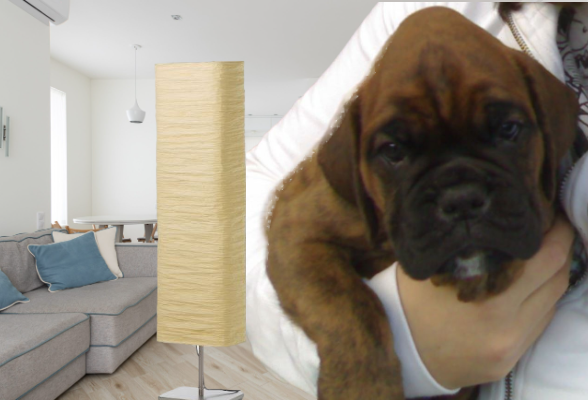
Boxer Puppy Accessory Checklist
Bringing home a new puppy is an exciting venture but comes with its fair share of responsibilities. To ensure you and your furry friend have everything you need for a smooth transition, here's a handy checklist for first-time dog parents.
For how to train a Boxer puppy, first and foremost, stock up on the essentials.
- The checklist will include bowls for food and water, high-quality puppy food, and comfortable bedding. Remember, chew toys! Puppies love to explore the world through their mouths, so providing them with appropriate teething toys can save your furniture from being torn to shreds.
Next on the list is grooming supplies. Keeping your new pup clean and well-groomed helps them look their best and promotes good health.
Acquire a gentle shampoo suitable for puppies, a brush that suits your pup's coat type, nail clippers or a grinder for regular trims, ear cleaning solution, and dental care products. Proper grooming will keep your puppy looking dapper and help maintain their overall well-being.
Lastly, investing in training aids can be highly beneficial when welcoming a new addition into your home.
Crate training is an effective tool to create comfort and security for your puppy while assisting with potty training efforts.
Additionally, consider getting baby gates or pet barriers to limit access to certain areas of your house during the initial adjustment period.
By checking off these items from your new puppy checklist, you'll set yourself up for success as first-time dog parents.
Positive Reinforcement Boxer Puppy Training
How to train a Boxer puppy, we suggest using the positive reinforcement method to teach basic obedience commands. It works best because it utilizes rewards for good behavior.
Dog parents give their puppy treats, praise, or playtime, which helps to reinforce those learned behaviors and encourages your pup to repeat them in the future.
One key aspect of positive reinforcement is timing - the trainer gives a reward immediately after the desired behavior occurs, so your puppy associates the action with the positive outcome.
- To effectively train your Boxer puppy using positive reinforcement, consistency is vital.
- Set clear rules and boundaries from day one and stick to them.
- Positive reinforcement will help your pup quickly understand specific behaviors that earn a reward.
- Remember that dogs thrive on routine, so try to incorporate training sessions into their daily schedule for optimal results.
- Furthermore, consider using a variety of rewards during training sessions.
- While treats are often the go-to reward for most dog owners, mix it up occasionally by using verbal praise or incorporating playtime as a reward. Variety keeps things interesting for you and your pup, making training more enjoyable and engaging.
How to train a Boxer puppy using positive reinforcement builds obedience and strengthens the bond between you and your furry friend. Trainers will consistently reward desired behavior rather than punish bad behavior; you create an atmosphere of trust and positivity that fosters effective learning.
Remember that every dog is unique; what motivates one may not work well with another.
During positive reinforcement training, you reward your dog with treats, affection, playthings, or whatever he likes best for doing your behavior command correctly.
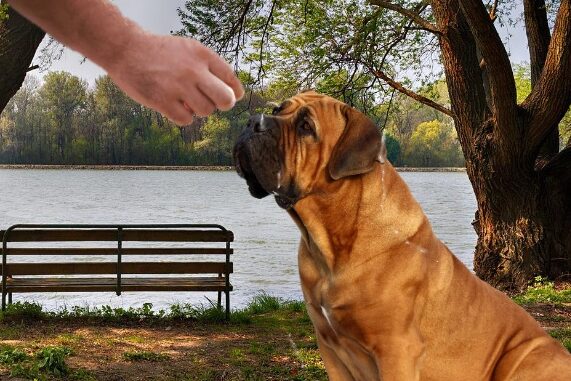
Positive reinforcement is one of your most effective methods for training your dog's behavior since the reward motivates them to perform it.
Basic Obedience Commands
How to train a Boxer puppy basic obedience commands is an essential step towards raising a well-mannered and disciplined dog.
Whether you are a novice trainer or have experience with other breeds, how to train a Boxer puppy requires specific techniques due to their strong-willed nature and high energy levels.
- To teach your boxer puppy the sit command, hold a treat close to its nose and slowly move it upwards. As their head follows the treat, their bottom will naturally lower into a sitting position.
- Once seated, say sit firmly and immediately reward them with the treat. Repeating this process will reinforce the association between the command and the desired action.
The stay command can be challenging for active boxers who love exploring everything around them.
- Begin by asking your pup to sit, then hold your open palm before them while saying stay.
- Take one small step back; reward them with praise or treats if they remain seated.
- Gradually increase the distance over time while maintaining eye contact and offering encouragement.
Finally, teaching your boxer puppy to come when called is crucial for their safety.
This command helps prevent accidents, and fosters trust between you and your furry friend.
- Start inside or in an enclosed area where distractions are minimal.
- Crouch down low with open arms while cheerfully calling out your dog's name, followed by come.
- When they reach you, reward them enthusiastically with treats or affection.
Boxer parents should be familiar with the following additional obedience dog training commands:
SIT ~ DOWN ~ STAY ~ COME ~ HEEL ~ Stop Jumping ~ LEAVE IT
Additional Obedience Command Examples For How To Train A Boxer Puppy
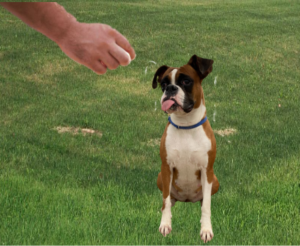
SIT - You should begin with "sit" since it is calm and makes teaching other simple commands much more manageable.
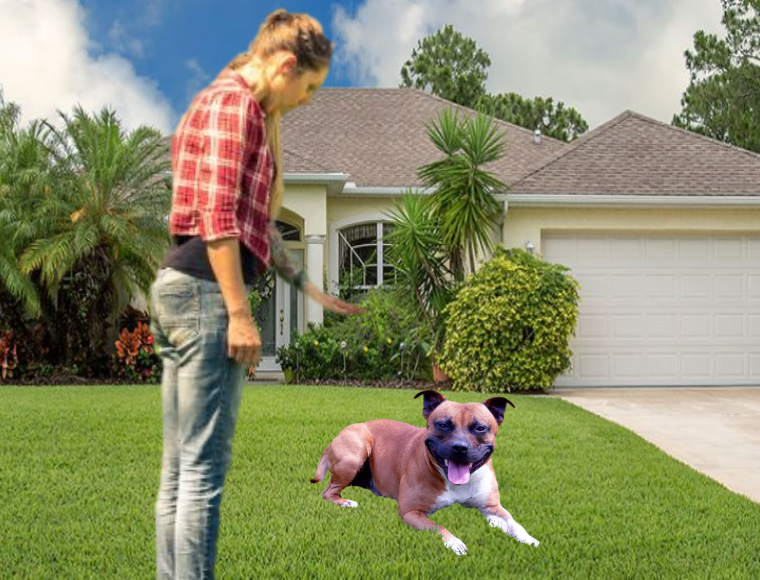
DOWN or LAY DOWN - helps you to calm and control your Boxer.

STAY - keeps your dog safe and prevents mischief from happening.
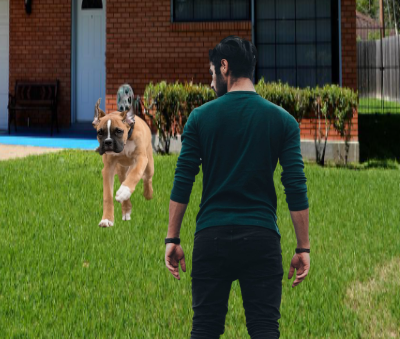
Come - prevents your dog from mischief and keep them safe off-leash.
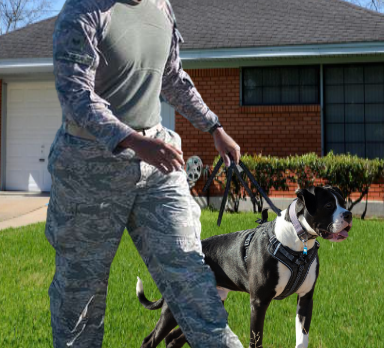
Heel - You should train dogs to walk calmly at your side, particularly in crowded areas.
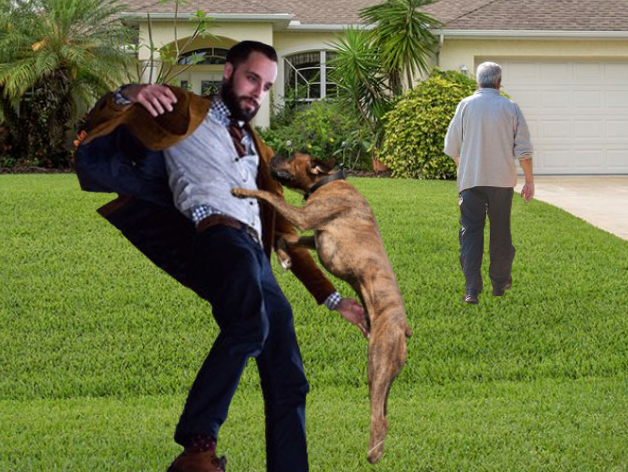
STOP JUMPING - Stops your dog from jumping on people and climbing onto furniture. Dogs that jump on people can cause injuries.
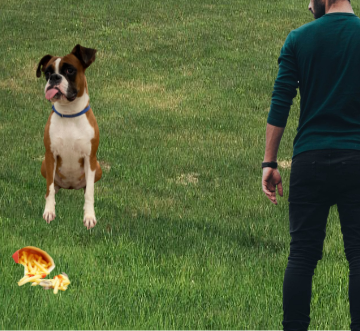
LEAVE IT - This will prevent your dog from picking up lousy or potentially harmful food items.
Do's and Don'ts Boxer Puppy Training
~~~~~~~~~~~~~~~
Do's
- Praise and Reward - Praise and reward your Boxer immediately after he displays the correct behavior.
- Training Areas - Training sessions should be conducted in a quiet environment to minimize distractions.
- Training Sessions - Repetitive training sessions should not last more than 15 minutes.
- Consistently - When giving commands, use the exact specific command words repeatedly without change and instruct family members to do the same.
- Gradually Remove Treats - When your Boxer understands and performs the behavior correctly, you can replace progressively training treats with praise.
~~~~~~~~~~~~~~~
Don’ts
- Correct Unwanted Behavior - Many pet parents are confused about positive reinforcement training, and it is difficult to stop unwanted behavior by saying "NO." to their puppy. Boxer dog parents must always stop unwanted behavior at an early age.
- Punish - Beating, scolding, or displaying a disgusting attitude will cause your puppy to become tense, upset, and confused, and it will prolong your training time for any desired behavior.
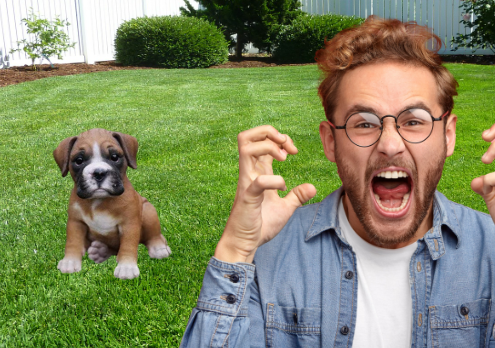
- Reward Unwanted Behavior - Whenever your Boxer hears children playing outside, he barks. Your response is to open the door and let your dog out.
Just because your dog barked doesn't mean you should let him outside. In this example, your dog is in control when he gets what he wants. He is the Alpha of the family, not you.
You can use the ignore method to stop your dog's barking when kids play outside. It is best to dismiss the barking and not let your Boxer run out. There will come a time when the barking will cease.
Boxer Dog Training Equipment
How To Train A Boxer Puppy To Use A Crate
Crate training is an essential aspect of raising a boxer puppy. Not only does it provide a safe and secure space for your furry friend, but it also helps in preventing destructive behavior when you're away. But how do you go about introducing your boxer puppy to the crate?
- Start by making the crate an inviting and positive place for your pup.
- Place cozy bedding inside, along with some chew toys or treats, to make it feel like a den rather than a confinement.
- Gradually introduce your puppy to the crate by leaving the door open and allowing them to explore at their own pace.
- Use positive reinforcement techniques, such as praise or small rewards, when they enter or spend time in the crate voluntarily.
- Consistency is vital when crate training a boxer puppy.
- Establishing a routine with regular meal times and potty breaks will help them associate the crate with good behavior and security.
- Please avoid using the crate as punishment so they don't develop negative associations with it.
Make sure your dog feels comfortable entering his crate voluntarily. You can give your Boxer food, water, and snacks in its crate
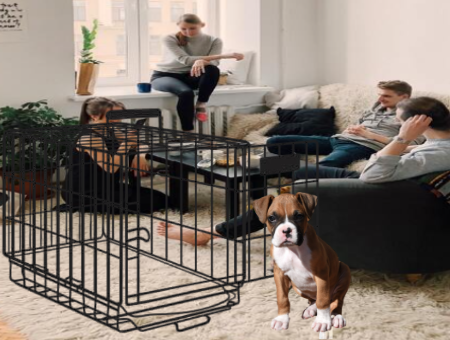
And remember, patience is crucial – each pup is unique and may take different amounts of time to adjust to their new den. By following these simple steps consistently, you'll soon have a boxer pup who feels comfortable and content in their cozy space!
You can ensure that your Boxer is comfortable by placing a chew toy or a bed inside the crate.
Potty Time How To Train A Boxer Puppy
Potty training a Boxer puppy can seem daunting, but it can be a smooth process with the right approach and patience.
- One essential tip is to establish a consistent routine from day one.
- Take your puppy outside to the designated potty area regularly, especially after waking up from a nap or after meals.
- Be sure to praise and reward them when they do their business outdoors.
Another great technique is crate training.
How to train a Boxer puppy to use a crate is simple because they are instinctively clean animals and do not like to soil their sleeping area.
By confining your Boxer puppy to a crate when you cannot directly supervise them, you teach them to hold their bladder and bowels until you allow them an opportunity for elimination outside.
Your responsibility is to:
- Ensure that the crate is appropriate for your growing pup – just enough for them to stand up, turn around, and lie down comfortably.
- Accidents happen, especially during the early stages of training.
- Avoid scolding or punishing your puppy when accidents occur indoors, as this may create fear or confusion.
- Instead, calmly interrupt them in the act by saying oops or clapping your hands gently to startle them into stopping.
- Guide them quickly toward their designated outdoor area without any fuss or negative reinforcement.
Dogs are naturally neat creatures and prefer to keep their sleeping area clean.
By putting your Boxer puppy in a crate when you can't keep an eye on them, you're teaching them to control their bladder and bowels until you take them outside to do their business.
Potty Training Products
How To Train A Boxer Puppy Social Skills
The idea of socializing your Boxer puppy is more than simply letting him run loose in the dog park or puppy school - and these are some of the worst places to do it.
You should start your Boxers socialization training as early as possible after your dog's vet vaccinations are complete or if you feel safe.
It would help if you socialized a Boxer puppy properly by gradually exposed to a variety of situations, including:
- People
- Dogs and other animals
- Various places
- Various situations
- Noises that may be frightening
- Activities and devices in the household
- “Dog life” activities like baths and being at home alone
How to train a Boxer puppy requires continual exposure to a particular condition will not automatically result in a well-socialized Boxer - it can instill unwanted behaviors.
It would help if you expose your puppy to what is acceptable behavior in every situation and gradually give him the skills he needs.
Need Training Help For Your Boxer?
Do you need help in training your furry friend? Then, sign up for this fantastic (and free) online workshop on how to train a Boxer to become as well-behaved as a service dog.
K9 Training Institute Free Workshop
The K9 Training Institute offers a free workshop where you can learn firsthand their effective training methods.
The Free Workshop emphasizes building a solid bond between you and your pup. They explain how to apply positive reinforcement techniques that make learning enjoyable for dogs and their owners.
Does your dog tug on its leash, bark constantly, and won't come when called? Sign Up and get the FREE Obedience Training Workshop Now!
How To Obedience Train A Boxer Dog Yourself
And Puppy Expectations
Before bringing a Boxer into a home or life, one must carefully consider the decision. Coexisting happily with a Boxer requires you to be a "dog person."
I love boxer puppies because they're cute, playful, and adorable. However, they don't remain that way for long as they grow into big, handsome adult Boxers. It will require your attention and time.
Do you want to bring home a Boxer puppy and train it yourself? Don't hesitate to contact us if you have questions about this article or how to obedience train a Boxer dog yourself using DIY video home training instructions.


































